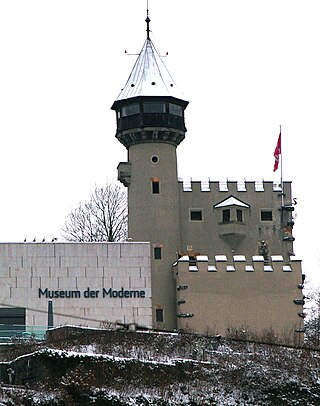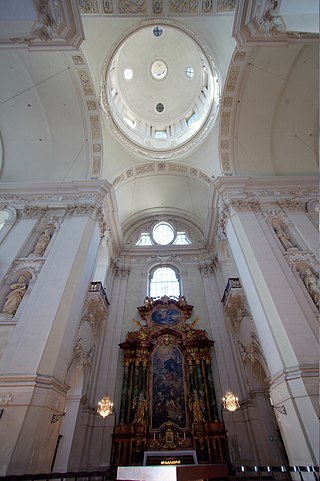Self-guided Sightseeing Tour #2 in Salzburg, Austria
Legend
Guided Free Walking Tours
Book free guided walking tours in Salzburg.
Guided Sightseeing Tours
Book guided sightseeing tours and activities in Salzburg.
Tour Facts
2.2 km
173 m
Experience Salzburg in Austria in a whole new way with our free self-guided sightseeing tour. This site not only offers you practical information and insider tips, but also a rich variety of activities and sights you shouldn't miss. Whether you love art and culture, want to explore historical sites or simply want to experience the vibrant atmosphere of a lively city - you'll find everything you need for your personal adventure here.
Activities in SalzburgIndividual Sights in SalzburgSight 1: Spirit of Mozart
Get Ticket*Spirit of Mozart is an art installation on the right bank of the Salzach River in the immediate vicinity of the Staatsbrücke in the old town of Salzburg. The artwork was created as part of the "Salzburg Art Project" in 2004 by the Yugoslavian performance and video artist Marina Abramović. Since 2013, the work has been part of the Würth Collection.
Sight 2: Haus der Natur
The Haus der Natur is a natural history and technical museum in Salzburg, Austria.
Sight 3: Museum der Moderne
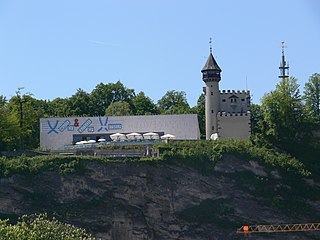
The Museum der Moderne Salzburg has two buildings at two different locations in Salzburg, Austria. The Rupertinum in the old town for new artistic concepts opened in 1983 and the Museum on the Mönchsberg for modern art in a contemporary setting opened in 2004.
Sight 4: Amalie-Redlich-Turm
The Water Tower on the Mönchsberg is a tower built between 1891 and 1892 on the Mönchsberg near Salzburg.
Sight 5: Sankt Blasiuskirche

The former Bürgerspitalkirche and today's Roman Catholic parish church of St. Blasius is located in Salzburg directly on the Mönchsberg between the western end of Getreidegasse and the old Gstättentor in the old town. It was built as a hospital church. Together with the Holy Cross Minster in Schwäbisch Gmünd, it is the oldest hall church in southern Germany. The church is part of the UNESCO World Heritage Historic Centre of the City of Salzburg.
Sight 6: Spielzeugmuseum
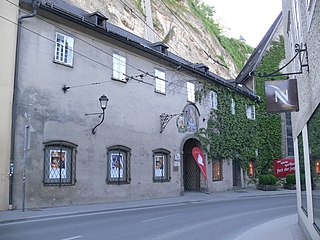
The Salzburg Toy Museum is located in Salzburg in the 16th century building of the historic Bürgerspital next to the Bürgerspitalkirche St. Blasius.
Sight 7: Großes Festspielhaus
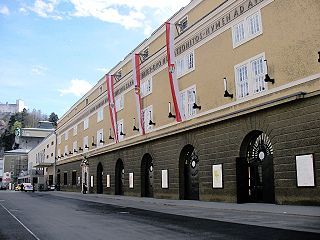
The Großes Festspielhaus, in its current form, was designed by architect Clemens Holzmeister in 1956 for the Salzburg Festival in Austria. It was inaugurated on 26 July 1960 with a performance of Richard Strauss' Der Rosenkavalier conducted by Herbert von Karajan, who also worked with Holzmeister on aspects of the building's design. The Large Festival House includes office space and tunneling into the Mönchsberg as well as a 2,179-seat performance space adaptable for both scenic and non-scenic events and acoustically scalable down for piano and song recitals. The stage is one of the widest in the world, at 100 metres (330 ft). The auditorium is square. Access from the street to the lobby is through five bronze doors, above which is inscribed a Latin motto by Thomas Michels: SACRA CAMENAE DOMUS / CONCITIS CARMINE PATET / QUO NOS ATTONITOS / NUMEN AD AURAS FERAT.
Sight 8: Kollegienkirche
The Kollegienkirche in Salzburg, Austria, is the church of the University of Salzburg. It was built in Baroque style by Johann Bernhard Fischer von Erlach. Dedicated to the Immaculate Conception, it is part of the UNESCO World Heritage Site Historic Centre of Salzburg. It is now both the parish church of people connected to the university and a venue of the Salzburg Festival.
Sight 9: Mozart's Birthplace
Mozart's birthplace is the birthplace of Wolfgang Amadeus Mozart at No. 9 Getreidegasse in Salzburg, Austria. The Mozart family resided on the third floor from 1747 to 1773. Mozart himself was born here on 27 January 1756. He was the seventh child of Leopold Mozart, who was a musician of the Salzburg Royal Chamber.
Sight 10: Beyond Recall
Beyond Recall is an art installation above the bridgeheads of the Staatsbrücke in the old town of Salzburg. The artwork was created as part of the "Salzburg Art Project" in 2011 by the Austrian art professor and light installation artist Brigitte Kowanz. Since 2013, the work has been part of the Würth Collection.
Share
How likely are you to recommend us?
Disclaimer Please be aware of your surroundings and do not enter private property. We are not liable for any damages that occur during the tours.
GPX-Download For navigation apps and GPS devices you can download the tour as a GPX file.

